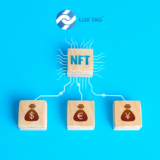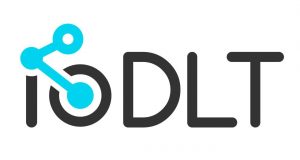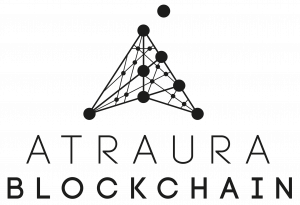Blockchain Isn’t a Silver Bullet, But Adoption Is On the Rise
By Dave Hodgson, Co-founder and Director at NEM Ventures, first appeared on Nasdaq
Reflecting on the first half of this year, we have witnessed significant movements in the blockchain and crypto space, which will undoubtedly cause a ripple effect in the latter part of 2019 and beyond.
Overall, these sub-trends have primarily been in relation to increases in regulatory engagement, the institutional adoption of crypto, adoption by ‘traditional’ high tech companies, greater awareness by the mass retail market, proof of real world blockchain applications and increasing maturity in crypto investment proposals.
Regulatory Engagement
Over the last 6 months, multiple global regulators have begun engaging more actively with crypto and DLT in general. Although this has not always been met with positive sentiment, the increasing certainty and engagement is positive regardless. Crypto is now firmly on the radar of governments.
Examples of this engagement include the FATF’s recommendations on crypto exchanges, the UK’s FCA approving its first hedge fund, various bodies publicly engaging with Facebook’s Libra project,the Japanese FSA beginning to issue licences this summer and Germany’s regulator approving its first digital Bond.
It’s important to note that there have been negative regulatory movements, such as the SEC threatening (and eventually closing) several crypto projects who were effectively operating in a regulatory void, through limited fault of their own.
Regardless of the outcome of such cases, the fact that they are happening offline means regulators are being forced to ask themselves hard questions about their stance on various subjects, which is a positive step for the industry as a whole. It’s also important to consider that despite the negative commentary, it has had limited impact on prices.
Institutional Adoption
Since early to mid-2018, we have seen a steady increase in interest from institutional finance, which has further accelerated in the first part of 2019.
Notable examples of this rising adoption include JP Morgan creating their own cryptocurrency, Societe Generale issuing their own Crypto Corporate Bond, Nasdaq listing BNC’s Crypto liquidity indices in their data sets for institutional investors, Fidelity opening up Institutional Bitcoin trading, Prime Factor Capital launching the first UK approved Crypto Hedge Fund and of course CME with their Bitcoin Futures contracts.
I believe that all of these steps are having a knock-on effect behind the scenes coupled with more trust coming from institutional finance. It is also clearly visible in the technical analysis of trading volumes in some cases with, for example, CME having exceeded Binance’s daily volume on some occasions.
It is also telling that these advances are being reported widely in the traditional Finance press sites such as Bloomberg, CNN, Reuters and the Financial Times.
Traditional Tech Companies
Similarly to institutional adoption, we have seen increasing activity from various large, innovative high-tech companies over the past few months. Amazon Web Services (AWS) have launched Blockchain as a Service (BaaS), while Google and other major players are making similar moves.
Facebook has entered the space through the Libra project, which is an open-source collaboration between up to 100 large established players: primarily tech companies such as Uber, PayPal and Lyft, but also traditional players such as Visa.
Libra, in particular, has huge partners who are well-funded and experienced with challenging both the status quo and regulators. Regardless of opinions for or against some of the major parties involved, their involvement and ability to address the US congress should not be underestimated, as it will continue to propel the industry and subsequent adoption forward.
It is worth considering which jurisdictions and companies may step in if the US is temporarily successful; Chinese companies such as Alibaba/AliPay and WeChat are logical sources of that type of innovation. That may further reduce the US global economic influence generally, and I believe is something that the US Tech industry will be watching with some concern.
Retail Market
There has been a notable increase in interest from retail investors, as well as projects and companies that serve them since the end of 2018, and again it is increasing in Q2/Q3 of 2019. This has been driven partly by the price increases we have seen from December-February 2019 until now and partly from the media coverage reigniting curiosity. This is visible in the fact that Google searches are increasing again and retail volume is returning to typical exchanges that service this sector of the market.
Companies who have been building through the ‘crypto winter’ are now seeing a strong uptake of their improved services, many of which appeal directly to the retail market, and particularly the younger demographic within it.
For instance, Wirex have had great success with their crypto banking service which offers traditional visa cards that can be used as a replacement for normal debit cards, allowing for payments to be made in crypto.
They recently closed an IEO raise in 14 minutes and are experiencing massive user growth purely through organic or word of mouth marketing. Similarly to Revolut, Monzo and StarlingBank, Wirex have effectively reached a market that is under served in the retail space and quietly set a precedent which has led to the likes of Coinbase and others following suit. While there are various reasons to be bullish on crypto prices at present, I believe that the anticipated mid-term price increases will further promote interest from the retail market.
Real World Use Cases
Although I don’t believe blockchain is a ‘silver bullet’ solution, it does excel in several applications that are being realized across industries. Just as is the case with any technology, it needs to be proven in order to be accepted by the masses, this is beginning to happen slowly already. We are seeing a big increase in, for example, climate change abatement solutions which require a trustless and transparent way to demonstrate the changes they are implementing.
We are also witnessing very strong Internet of Things (IoT) and Artificial Intelligence (AI) applications coming through in healthcare, energy and supply-chain particularly. While most real world use cases are still in their infancy in terms of adoption, people and businesses are beginning to incorporate blockchain and DLT into their long-term vision and solutions, rather than solely being an easy way to raise finances.
A recent report by Deloitte shows that 83% of respondents (primarily corporate executive) now see compelling use cases for Blockchain.
Structured Finance Raises
In contrary to the 2017 ICO fundraising processes, we are seeing a far greater maturity and sophistication in investment proposals and opportunities within the blockchain space. Particularly in relation to Security Tokens, which have now launched in public markets, and Initial Exchange Offerings (IEOs) which are a good way for trusted parties in the industry to look into new investments and provide a stamp of approval to investors.
While these fundraising models can’t act as a substitute to investment advice, nor are they fool proof, they are far preferable to the days of 10 page PDFs raising millions of dollars in minutes with limited vision, strategy or regulatory oversight. I expect this trend will continue, and particularly the STO route beginning to attract institutional investment as they become more comfortable.
Analysing these trends, the key takeaway is that various sub-trends are contributing to a far larger macro trend: blockchain and crypto adoption and acceptance is accelerating across the board. This shift is happening with the further benefit of a backdrop of traditional equity, bond and commodity markets which are generally unattractive, a financial system in which we are seeing negative interest rates and further talk of quantitative easing.
Within that context, these trends are likely to increase and move us further toward global, cross-border systems that incorporate blockchain into the fabric of their operations.
The views and opinions expressed herein are the views and opinions of the author and do not necessarily reflect those of Nasdaq, Inc.
About NEM Ventures
NEM Ventures, the newest member of the ecosystem. Created in 2018 by a small, highly motivated team. We are mandated by the community to improve management of the Community Fund. Previously, a grant system run by volunteers, this has transitioned to a modern Blockchain Venture Capital firm.
The focus is on commercially viable projects that utilize or benefit the NEM ecosystem and XEM adoption.










